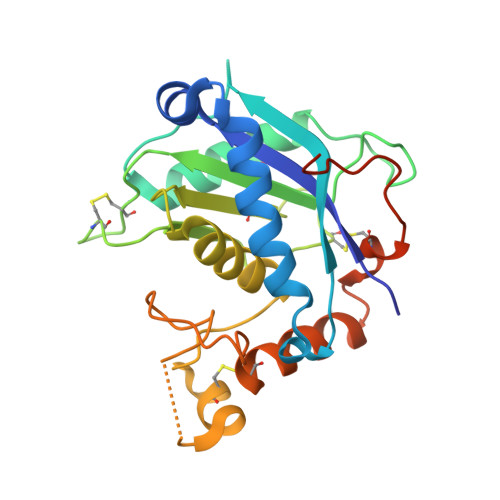Identification of potent and selective hydantoin inhibitors of aggrecanase-1 and aggrecanase-2 that are efficacious in both chemical and surgical models of osteoarthritis.
Durham, T.B., Klimkowski, V.J., Rito, C.J., Marimuthu, J., Toth, J.L., Liu, C., Durbin, J.D., Stout, S.L., Adams, L., Swearingen, C., Lin, C., Chambers, M.G., Thirunavukkarasu, K., Wiley, M.R.(2014) J Med Chem 57: 10476-10485
- PubMed: 25415648
- DOI: https://doi.org/10.1021/jm501522n
- Primary Citation of Related Structures:
4WK7, 4WKE, 4WKI - PubMed Abstract:
A disintegrin and metalloproteinase with thrombospondin motifs-4 (ADAMTS-4) and ADAMTS-5 are zinc metalloproteases commonly referred to as aggrecanase-1 and aggrecanase-2, respectively. These enzymes are involved in the degradation of aggrecan, a key component of cartilage. Inhibitors of these enzymes could be potential osteoarthritis (OA) therapies. A series of hydantoin inhibitors of ADAMTS-4 and ADAMTS-5 were identified from a screening campaign and optimized through structure-based drug design to give hydantoin 13. Hydantoin 13 had excellent selectivity over other zinc metalloproteases such as TACE, MMP2, MMP3, MMP13, and MMP14. The compound also produced efficacy in both a chemically induced and surgical model of OA in rats.
Organizational Affiliation:
Eli Lilly and Company, Lilly Corporate Center , Indianapolis, Indiana 46285, United States.


















